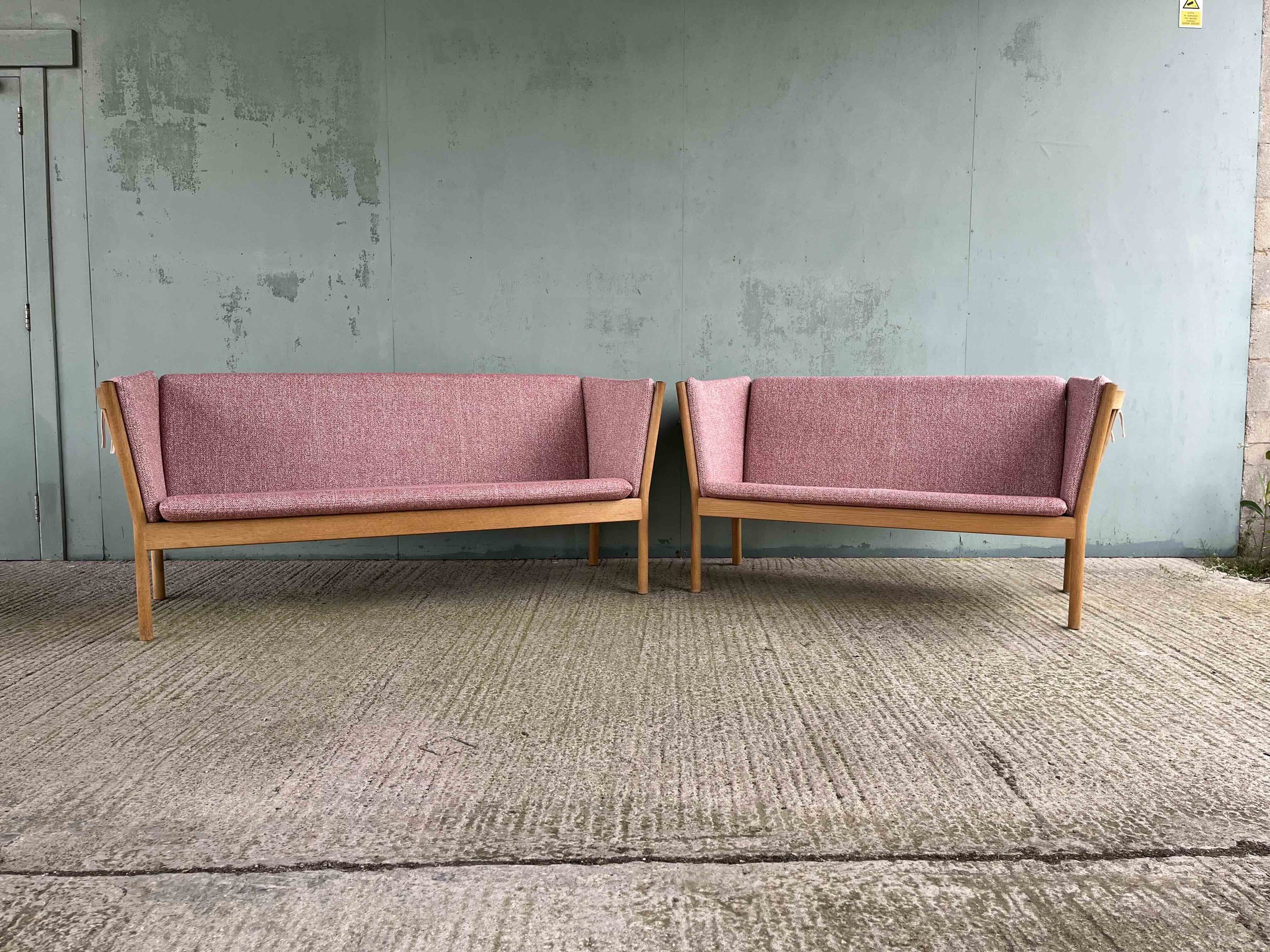
Types of Fabric Textures
Comfort Levels
Why It Matters. The texture of a fabric affects both comfort and aesthetics. Soft, plush fabrics create a cozy feel, while smooth, structured textures add a sleek, modern touch. Choosing the right texture enhances your furniture’s visual appeal and functionality.
Plush & Velvety Fabrics: Luxurious and Soft
Examples: Velvet, chenille, microfiber
Feel: Smooth, soft, and plush
Best for: Cozy, elegant, and high-end seating areas
Pros: Luxurious look, soft to the touch, warm and inviting
Cons: Can show marks and stains, may require regular brushing or vacuuming
Why Choose It? Velvet and chenille provide unmatched softness and sophistication. These fabrics make any piece feel indulgent, making them perfect for formal living rooms, reading nooks, and lounges where comfort is a priority.
Comfort Tip: If you love velvet but need durability, opt for performance velvet with stain resistance.
Crisp & Breathable Fabrics: Casual and Airy
Examples: Linen, cotton, muslin
Feel: Lightweight, natural, and breathable
Best for: Casual and summer-friendly spaces
Pros: Cool to the touch, softens over time, offers a relaxed aesthetic
Cons: Wrinkles easily, can stain without treatment
Why Choose It? Linen and cotton are ideal for airy, minimalist spaces. They keep seating cool in warm weather and soften beautifully with age, making them perfect for relaxed interiors.
Comfort Tip: Blended linen (linen mixed with polyester or viscose) reduces wrinkling and enhances durability.
Textured & Woven Fabrics: Cozy and Durable
Examples: Tweed, boucle, herringbone, wool blends
Feel: Richly textured, warm, and sturdy
Best for: Classic, rustic, or mid-century interiors
Pros: Hides stains and wear, feels cozy, adds visual interest
Cons: Can feel rough if poorly woven, may trap dust and pet hair
Why Choose It? If you want a fabric that adds character and durability, woven textures like tweed and boucle offer a timeless appeal. These work well in high-traffic areas, as they disguise imperfections.
Comfort Tip: If you love woven textures but want a softer feel, opt for wool blends or boucle with synthetic fibers.
Smooth & Sleek Fabrics: Modern and Practical
Examples: Leather, faux leather, vinyl, satin
Feel: Cool, sleek, and structured
Best for: Contemporary, industrial, and minimalist styles
Pros: Easy to clean, highly durable, stylish
Cons: Can feel cold, less cozy for lounging
Why Choose It? Leather and faux leather provide a sleek, sophisticated look while being low-maintenance. These materials are excellent for modern interiors and high-traffic areas like offices and dining chairs.
Comfort Tip: If you want the elegance of leather but a softer feel, opt for nubuck or suede-finish leather.
How Texture Affects Comfort Over Time
Fabric comfort isn’t just about the first impression—it changes over time based on use, environment, and maintenance. Consider:
Softening: Natural fabrics like linen and cotton become softer with washing and use.
Pilling: Some textures, like chenille and boucle, may develop pilling, requiring upkeep.
Temperature Sensitivity: Leather can feel cold in winter and hot in summer without proper conditioning.
Final Thoughts on Texture & Comfort
The right texture can completely change the feel and function of your sofa or chair. Whether you prioritize plush softness, cool breathability, or stylish durability, understanding texture ensures you create a seating experience that’s as comfortable as it is visually stunning. Take the time to test different fabrics, consider your lifestyle, and choose a texture that suits both your needs and your aesthetic.
